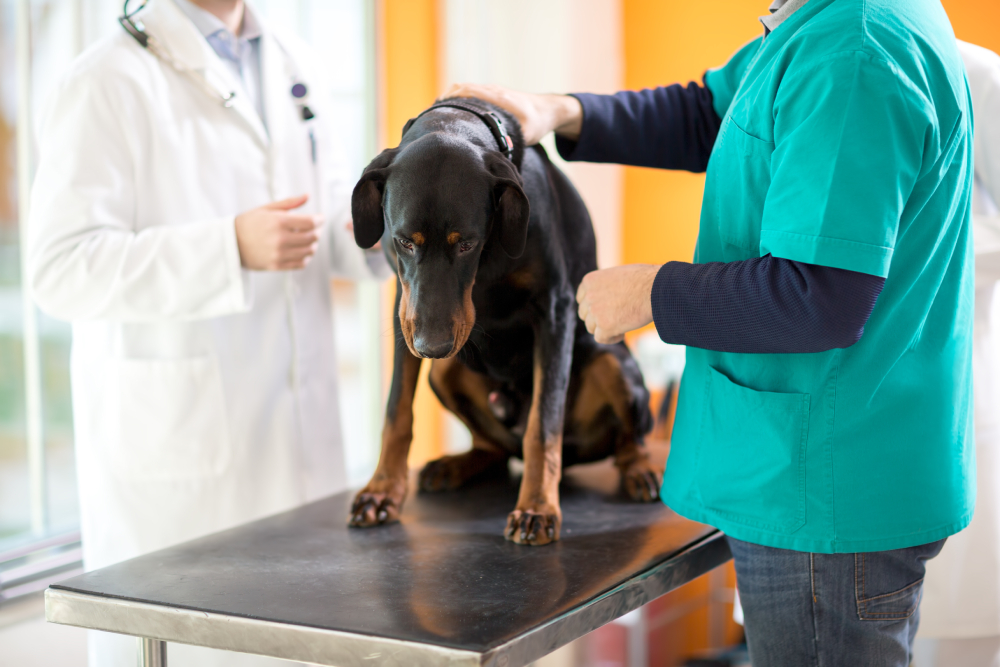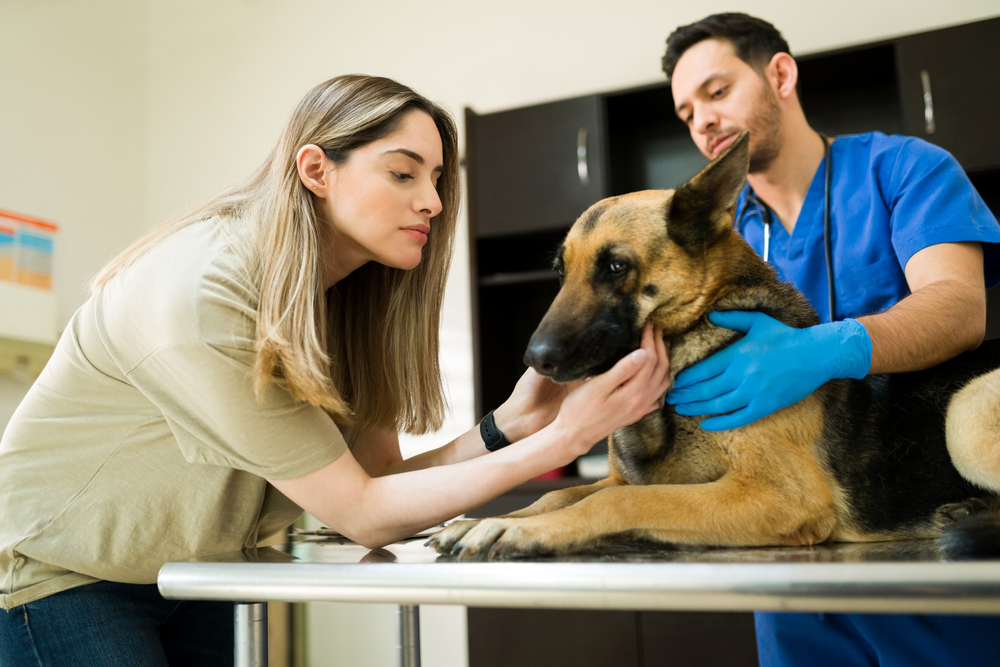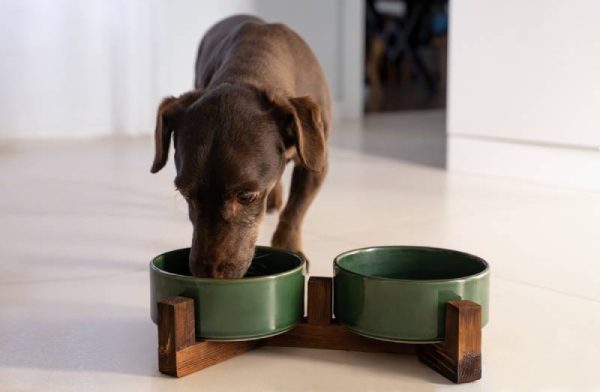If you’ve been told your dog has cancer, you know the gut-wrenching feeling that comes with it. You may have been so overwhelmed when you got this news that you took in little of the vital information you need to decide what happens next. Cancer is an abnormal growth of an individual’s cells, which multiply and spread uncontrollably.
This can lead to problems almost anywhere in the body. This uninhibited growth is caused by mutations in the cell’s DNA; mutations happen all the time, but if you are unlucky, one will cause cancer. Cancer can happen in dogs of any age, but it is much more common in older dogs over 10 years old due to the links between cancer and aging.
Almost half of dogs over 10 years old will die from cancer. Some breeds, like Boxers, Bernese Mountain Dogs, and Golden Retrievers, are also more prone to cancer. When your dog has cancer, there are a few steps you must take, and you need to make some decisions based on your circumstances. Read on for more details.

The 6 Steps to Follow When Your Dog is Diagnosed With Cancer
1. Verify the Diagnosis
Each type of cancer is given a name based on the type of cell that turned cancerous, the organ it came from, and how aggressive the growth is. For example, with a tumor originating from liver cells, we could call it a hepatocellular (liver cell) adenoma if it is benign or a hepatocellular adenocarcinoma if it is cancerous. The diagnosis is given once your vet has sent the lump for testing at a veterinary diagnostic lab.
Once we have the diagnosis, we can predict the likely outcome of the cancer based on how this cancer typically behaves in dogs. Knowing the expected outcomes or “prognosis” for your dog’s type of cancer is extremely important, as it’s going to help you make some decisions in the near future.
Dogs with aggressive mammary tumors usually live for less than one year, but several other traits impact the survival time. Dogs with low-grade soft tissue sarcoma live for years, whereas for high-grade tumors, the average survival time is less than a year.
Most dogs with grade I mast cell tumors will survive 1,500 days, whereas, for grade III, only 6% made it that long. As you can see, the information from the lab makes a huge difference, so if you haven’t already, you need to get a diagnosis.

2. Consult a Veterinary Oncologist
Veterinary oncologists are vets with post-graduate training and specialize in cancer treatments for pets. Before being certified, oncologists need years of training and have to pass difficult exams. In the US, oncologists are registered through the American College of Veterinary Internal Medicine. Your primary care veterinarian will likely refer you to a nearby veterinary oncologist. You can also search for veterinary oncologists in your area here.
An oncologist works with your primary care vet or other specialists, like surgeons, to organize care for your pet. They will usually have access to advanced imaging like CT or MRI and more specialized drugs and equipment.
Oncologists can treat pets with chemotherapy and radiation. Their goal is to balance your pet’s quality of life with effective cancer treatments. They know the common side effects of cancer treatment and can monitor and adjust therapies as needed. For a given type of cancer, there are usually multiple treatment options with different risks and benefits.
Even if you are not 100% sold on following up with advanced treatments, it’s helpful to talk to an oncologist. They have a vast knowledge base and can give accurate treatment, prognosis, and pricing information.
If you are far from a vet clinic and need urgent vet advice and guidance on the best course of action you can chat with a vet online.
If you need to speak with a vet but can't get to one, head over to PangoVet. It's an online service where you can talk to a vet online and get the personalized advice you need for your pet — all at an affordable price!
3. Decide Whether to Get Specialist Treatment
In this area, there is no one-size-fits-all answer. First, you must look objectively at your pet’s disease and likely survival time, even with the gold-standard treatment. Then, you should consider other problems your pet has, their current health, and whether they are already ill from their disease.
You should take into account their age and the average lifespan of their breed. If your pet hates going to the vet, they might not cope well with regular cancer treatment. The final factor that will play into your decision is the resources you have available for your pet’s treatment.
The cost of the treatment is one side of it, and your oncologist should give you a good idea of the costs and whether they are likely to be ongoing or one-off. There are different payment options like loans or crowdfunding available.
If you are fortunate enough to have taken out pet insurance, you should contact your company to see how much of the costs they will cover. Cancer treatment also takes a time investment on your part. You must manage your pet’s numerous appointments and monitor them closely for side effects at home.
Keep in mind that “average survival times” do not guarantee your dog will live for that long. For every dog that lives longer than average, there is one that passes away sooner.

4. Consider Palliative Care
There are a few reasons you might decide not to pursue specialist treatment for your dog:
- Poor prognosis
- Pet’s health or behavior
- Personal/ family circumstances
Whatever the reason, know that palliative care is a valid choice. Palliative care aims to keep your dog as comfortable as possible in their last days. Medications like pain relief, anti-inflammatories, and anti-nausea drugs can keep your pet happy in the short term.
You can also install ramps and give your dog a comfortable orthopedic bed to make their life more pleasant. Nutritional support is also a form of palliative care. You should talk to your vet about what palliative care interventions will improve the quality of your pet’s life. Give your dog plenty of love and support at this time.
Keep them involved in family life. Place their bed in a comfortable, busier area like the living room. If they can’t go on walks, you can push them around in a cart or pram. Clean and brush them regularly, keep their coat clean, and check them for pressure sores. Follow your vet’s instructions and contact them if you have any questions.
5. Look Into Holistic Treatments
Holistic treatments focus on the whole dog, not just their disease. However, be aware of the vast amount of misinformation on the internet and instead seek advice from your vet. Avoid raw diets since your dog’s immune system is likely to be suppressed at this time, and raw food brings a burden of parasites and bacteria that you are better off avoiding.
You may need to switch to a veterinary prescription diet or a tastier food if your pet has a poor appetite. Make dietary changes gradually to avoid gastrointestinal upsets. Acupuncture and massage therapies can help ease pain in cancer patients.
Omega-3 fatty acids have improved survival time in dogs undergoing chemotherapy for lymphoma. In dogs with hemangiosarcoma, Polysaccharopeptide (PSP) found in turkey tail mushrooms improved survival time.

6. Monitor Your Dog’s Quality of Life
Everyone hopes that when it comes time for their pet to pass away, they will do so peacefully, at home, in their sleep, without any suffering. Unfortunately, this rarely happens, and the dying process in pets can be drawn out and distressing. At the end of the day, if your dog isn’t enjoying their life, you don’t want to prolong it.
You want their last moments to be happy and not wrought with suffering. That is why most people choose to euthanize their dog when their quality of life declines. Some vets specialize in euthanasia and perform house calls to ensure your pet is as comfortable as possible during the process. But how do you know when it’s time to make that decision?
- They can’t see, which is causing them to have accidents or be anxious.
- They don’t want to interact with the family as much as usual.
- They have trouble walking around.
- They are incontinent.
- They are not eating or nauseous despite medications.
- Eating seems difficult for them.
- They are in pain despite pain relief.
- They can’t breathe well.
- They have lots of seizures.
- They keep getting dehydrated.
- Their coat can’t be maintained in good condition.
- They have an oozing, smelly, or bleeding tumor.
- They no longer enjoy the things they used to.
- They have more bad days than good ones.
- They appear frustrated.
You may instinctively know when it’s the right time to say goodbye, but if you’re not sure, your vet can help you make the decision.

Conclusion
A cancer diagnosis is devastating but, unfortunately, common in older dogs. We know that doesn’t make the difficult decisions ahead any easier. Some cancers are worse than others, and some even have a fair prognosis, so it’s essential to understand the type of cancer you are dealing with. Whether your budget for treatment is small or large, your dog’s quality of life should always come first. We wish you all the best on this journey with your dog.
See Also:
- Are All Tumors Cancerous in Dogs? Our Vet Explains the Differences
- My Dog Has Cancer: What Now? Treatment Options Explained (Vet Answer)
Featured Image Credit: Klymenok Olena, Shutterstock


















